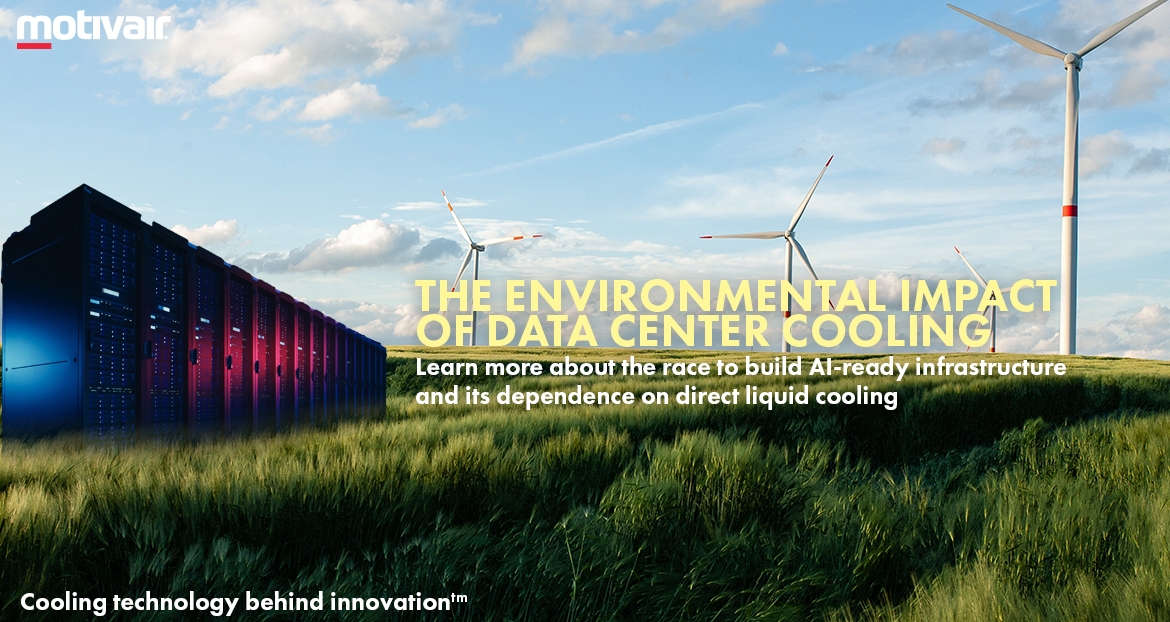Motivair Cool News
August 17th, 2023
Reducing AI's Environmental Impact

In today's fast-paced world, business leaders and Board of Directors are not just focusing on profits but are also under increasing pressure to improve their Environmental, Social, and Governance (ESG) performance. As a result, leading technology companies, cloud service providers (CSPs), and the data center industry are now facing calls for improved return on capital and reduced environmental impacts.
One significant factor driving the demand for data centers is the adoption of Artificial intelligence (AI)applications, powered by advanced CPUs and GPUs from Intel, AMD, and Nvidia. Enabled through high-performance computing (HPC), AI technologies have become indispensable for businesses to stay competitive and run their operations efficiently.
The recent launch of Microsoft’s ChatGPT and Google’s Baird has put immense pressure on data center infrastructure, as servers and modern processors try to keep pace delivering high-value services. In May, NVIDIA CEO Jensen Huang stressed the acceleration of replacing outdated data center equipment, noting $1 trillion in infrastructure will need to accommodate the shift from general-purpose computing to accelerated computing.
As processor power consumption rises, AI applications will depend on liquid cooling. It has proven to be a preferred method for thermal design guides and system architectures, especially as chip roadmaps are already forecasting processors with powers exceeding 750 watts and even 1,000 watts in development.
The Benefits of Direct Liquid Cooling:
1. Energy Efficiency and Reduced Carbon Footprint: Direct liquid cooling for data centers offers a more energy-efficient approach compared to traditional air-cooling methods. The closed-loop system continuously circulates fluid to remove heat, which is approximately 10 times more efficient than air cooling. By conducting heat better than air, liquid cooling enables data centers to handle more compute-intensive applications while consuming less energy. This reduction in energy usage leads to a reduced carbon footprint, making it a viable solution for companies looking to align with ESG goals and reduce their environmental impact.
2. Water Conservation: In addition to energy efficiency, direct liquid cooling also presents a solution to the growing concern of water consumption in data centers. With data centers requiring more power to operate advanced technologies and systems, the demand for water to cool these facilities has increased substantially. However, direct liquid cooling uses less water compared to traditional air-cooling methods, contributing to water conservation efforts and making it an environmentally responsible choice for data center cooling.
3. Space Optimization and Reduced Noise Pollution: Data centers play a critical role in the digital transformation of businesses, but they often face challenges in reducing their energy footprint, noise pollution, and water consumption. Direct liquid cooling can help address these challenges by reducing the data center footprint, allowing for more compute deployments within the same space. Moreover, the shift from traditional air-cooling systems to direct liquid cooling can lead to a significant reduction in noise pollution, creating a quieter and more environmentally-friendly environment.
Investing in Energy-efficient Solutions
The adoption of direct liquid cooling in data centers can have a positive environmental impact and contribute significantly to a company's efforts to meet ESG goals.
As data centers race to build new infrastructure required for the AI era, it’s important to remember that AI will depend on Direct Liquid Cooling for efficient operations. Embracing Direct Liquid Cooling offers businesses a chance to reduce energy consumption, water usage, and noise pollution, promoting a sustainable and responsible future for the tech industry.